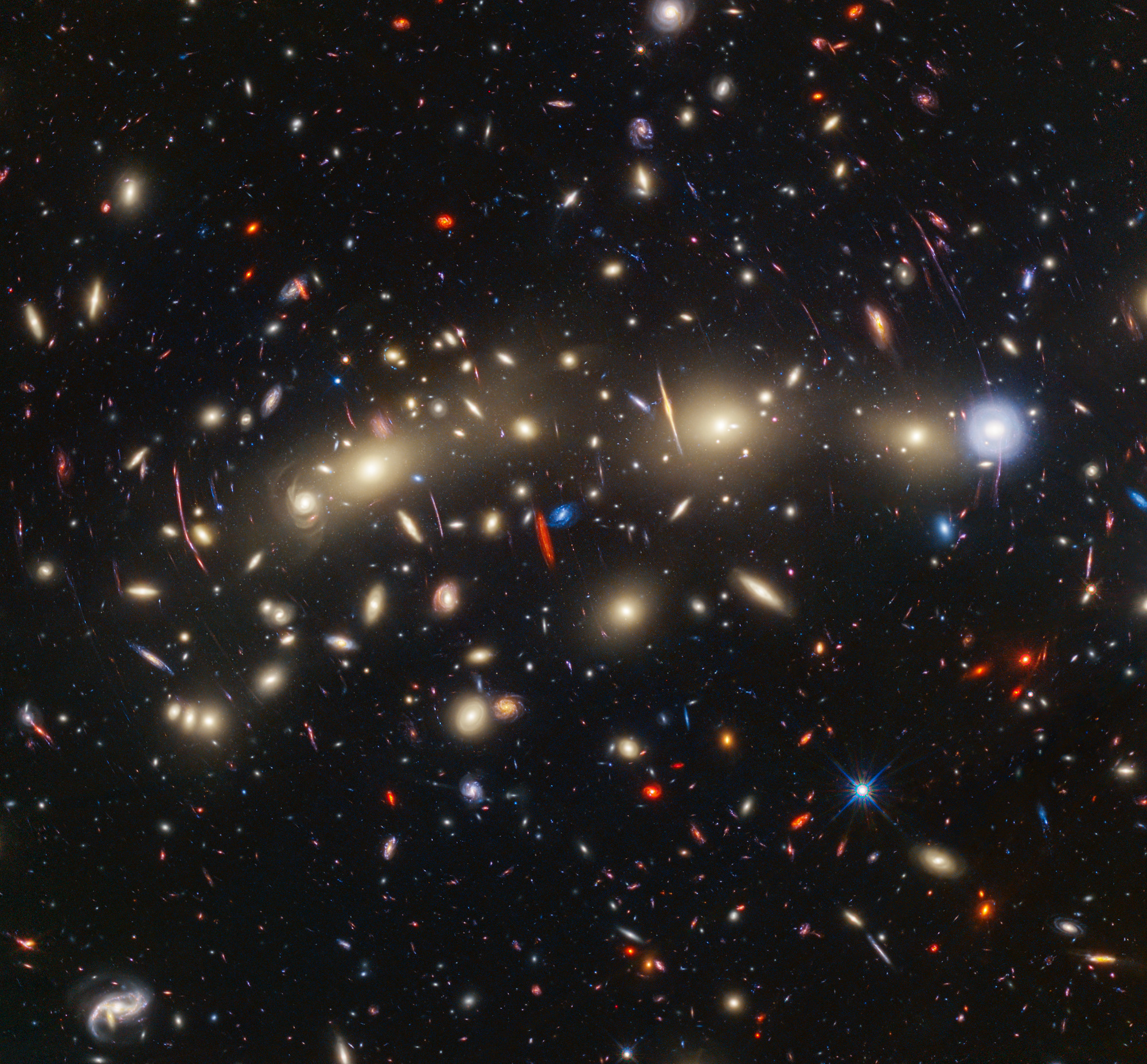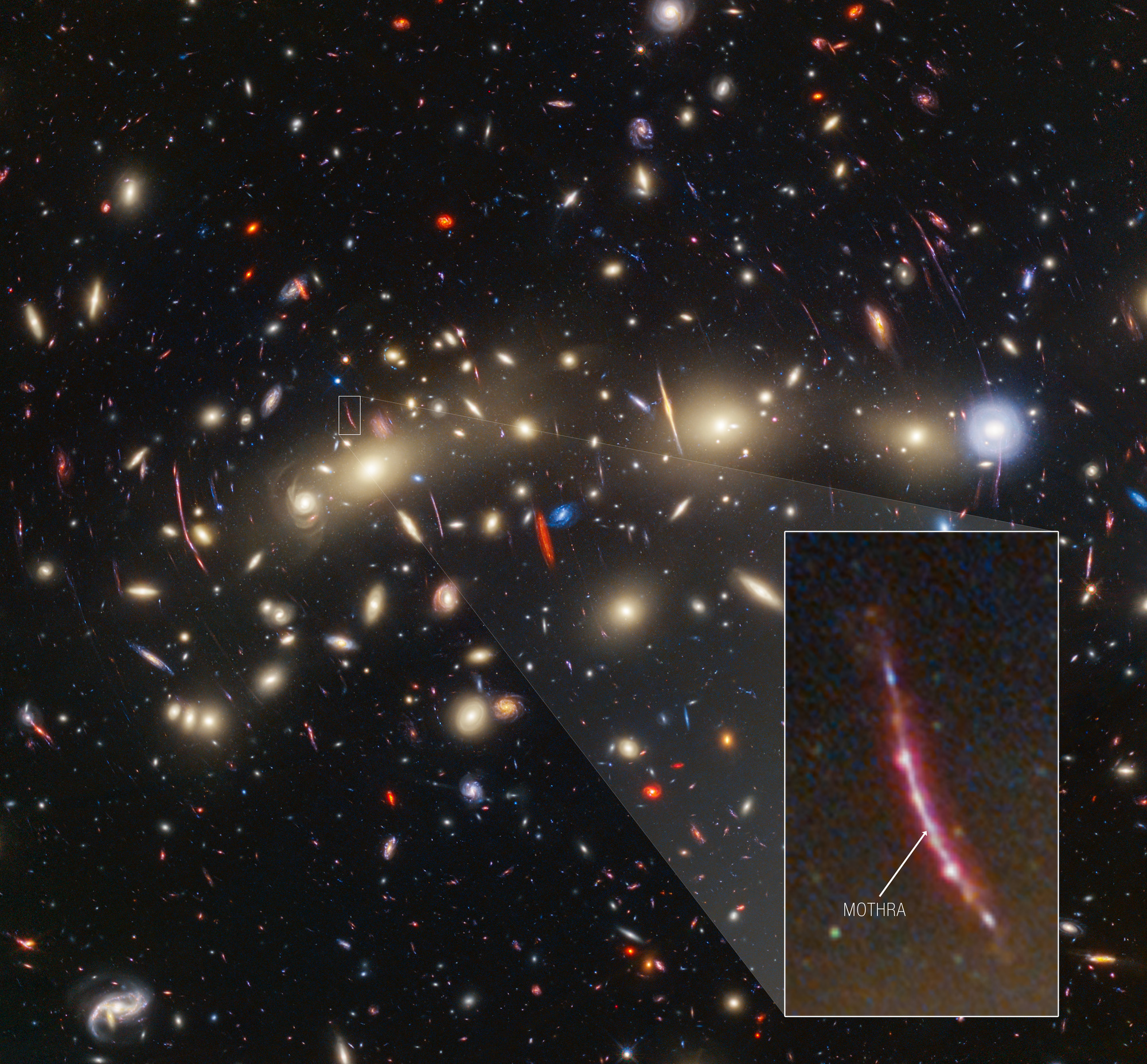
The galaxy cluster MACS 0416 obtained with Hubble and the Web / NASA, ESA, CSA, STScI, IFCA, UWA, ASU and University of Missouri.
IFCA researcher José María Diego participates in a new polychromatic image of the cosmos, the most complete obtained to date
9 November 2023
Only when two leading observatories join forces can new science be obtained, thanks to the combination of their techniques. The James Webb Telescope (NASA, ESA and the Canadian Space Agency) and the Hubble Telescope (NASA, ESA) have obtained a new image of the cosmos, in shades of blue and red, colours that provide new data on the distances between galaxies. In addition, more than a dozen new cosmological objects, such as individual stars or multiple star systems, have been observed. The work, carried out by a team including José M. Diego, from the Instituto de Física de Cantabria (IFCA, CSIC-UC), and researchers from Arizona State University and the University of Missouri, has been published in the Astronomy & Astrophysics journal.
Among all the objects discovered, the results give new clues about a supernova magnified by gravitational lensing, which is part of a new colliding cluster of galaxies, the so-called MACS0416, located about 4.3 billion light-years from Earth, and which scientists claim will merge to form a larger cluster.
The polychromatic image, obtained by combining visible and infrared light from both space telescopes, has resulted in one of the most complete views of the universe ever obtained. The landscape is made up of a large number of galaxies outside the cluster and different types of stars hitherto "invisible" to the community.
Indeed, the research team, as part of Hubble's Frontier Fields program, had already been tracking this cluster. Now, together with the infrared view provided by Webb, they are strengthening their gaze by travelling even further back in time to learn about the youngest universe. "We are building on Hubble's legacy to reach out to greater distances and fainter objects", says Rogier Windhorst, a scientist at Arizona State University and principal investigator for the Prime Extragalactic Areas for Reionization and Lensing Science (PEARLS) program, which is responsible for the Webb observations.
What the colours reveal
In order to create the image, the shortest wavelengths of light have been colored blue, the longest wavelengths red and the intermediate wavelengths green. And this range of wavelengths results in this vivid galaxy landscape. At the same time, these hues offer new insights into the distances of galaxies, so that blue galaxies, the ones observed by Hubble, are relatively close to Earth, and show intense star formation; while the redder galaxies tend to be further away, and are the ones detected by Webb. The deep red colour shows that the formations contain cosmic dust that absorbs the bluer colours of light. "The full picture doesn't become clear until you combine the Webb data with the Hubble data", explains Windhorst.
Galactic Christmas tree
The research team has been making these observations for several years in order to search for transient objects, i.e. those whose brightness changes over time. And thanks to this search they have come up with this very complete snapshot of a corner of the cosmos. In total, 14 transient bodies have been identified, of which 12 were in gravitationally lensed galaxies, and are thought to be single stars or multiple star systems. The remaining two objects are expected to be supernovae.
"We call MACS0416 the Christmas Tree cluster of galaxies, both because of its colour and because of the flickering lights we find inside it. We can see transients everywhere", explains Haojing Yan, a member of the University of Missouri and co-author of the paper. Astronomers could find many more transients in this cluster, and others like it, through regular follow-ups with the James Webb.
A monstrous star
Among the transient objects identified, IFCA astrophysicist, José M. Diego, highlights a binary star, which he has named "Mothra", in allusion to its monstrous nature, "as it is very bright, magnified, and located in a galaxy that existed some 3,000 million years after the Big Bang". It has also been determined to have a mass between 10 000 and 1 million times that of the sun and is made up of two giant stars, one hot and one cold. Mothra is similar to Godzilla, another extended star discovered months ago by the Cantabrian researcher (both Godzilla and Mothra are giant monsters, known as kaiju in Japanese cinema).

Mothra is a star within the cluster MACS0416, with a mass between 10 000 and 1 million times that of the Sun. / NASA, ESA, CSA, STScI, IFCA, UWA, ASU and University of Missouri.
Mothra had already been spotted by Hubble in 2014, which is unusual, as a very specific alignment between the foreground galaxy cluster and the background star is needed to magnify a star so precisely. According to the experts, this is because there is probably an additional object within the foreground cluster, which gives more magnification to see Mothra so clearly, what they call a milli-lens. The work has been published in Astronomy & Astrophysics.
"The most likely explanation is that it is a globular star cluster that is too faint for Webb to see directly", says Diego, lead author of the paper detailing the finding. "But we don't yet know the true nature of this additional lensing", he concludes. Therefore, the exact origin of the monstrous star is still unknown.
Download the paper in PDF (Webb's PEARLS: Transients in the MACS J0416.1-2403 Field).
STSI Communication / IFCA Communication
